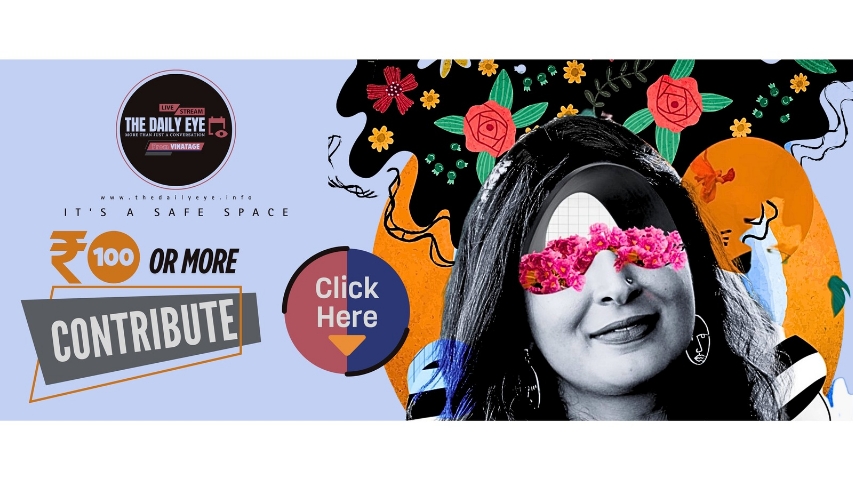
THOUGHT FACTORY: BOLLYWOOD GRAPPLES WITH DISABILITY
by Monojit Lahiri July 27 2025, 7:48 pm Estimated Reading Time: 7 mins, 7 secsPortrayal of differently abled in Bollywood: Tokenism? Caricature? Empowerment? There are no easy answers because disability in Bollywood cinema is a tricky issue, says Monojit Lahri.
Portrayal of disability in Bollywood has long sparked debate—ranging from tokenism and caricature to genuine empowerment. From Chhapaak, Taare Zameen Par, Barfi, and Black to Sitare Zameen Par and Tanvi the Great, the Indian film industry has dabbled in depictions of physical and mental challenges with varying degrees of depth and sensitivity. While critics like Ratnaboli Ray condemn exaggerated performances and factual inaccuracies, others like Leena Yadav and Aman Ali Khan applaud the courage to tell stories rooted in struggle and triumph. This article by Monojit Lahiri explores diverse perspectives from filmmakers, counsellors, lyricists, and actors, while also contrasting Hollywood’s problematic legacy with Indian cinema’s ongoing efforts to strike a balance between entertainment and education.
The Chhapaak Moment and Beyond
Flashback time. As the Meghna Gulzar directed Deepika Padukone starrer Chhapaak struggled to draw viewers to its passionately delivered acid-victim story of tragedy and triumph in year 2020 – despite raves from critics and the culturally evolved and with Sitare Zameen Par and Tanvi the Great hitting our screens recently - it’s a good time to pause and check out the intent of B-town’s engagement in this special and sensitive category.
Are these dark and de-glam narratives consciously (cleverly) pitched at an audience-base desperate to break free from the dumbed-down escapist hooey, doled out with depressing regularity? Are these initiatives genuine attempts to seriously and truthfully get to the root of disabilities portrayed – or devices to generate laughs or extract tears? Do actors acting-out these disabilities view these roles as life-transforming opportunities to push the envelope? Do audiences, critics and jury members fall for this mush and respond with critical and commercial acclaim?
Before we open out the debate to differing voices, some facts. Disabled – as a category – is not new to B-town. From Gulzar’s Koshish in the seventies to Guzaarish, My Name is Khan, Krrishh, Barfi, Taare Zameen Par, Black, Paa, Kaabil, even Zero and more… B-town has dabbled in this space with various degrees of success. Question is: Are these thrusts one from the heart or grand, expansive gestures of tokenism?
Voices in Support and Dissent
As always, the responses are polarised.
Delhi-based lyricist Manobendra Bhattacharya (I am Kalaam) believes that the “big picture” should be kept in mind while offering opinion. “Like epics, history and mythology when one enters this platform, creative licence must be taken into account. Remember Bollywood is an entertainment platform for the masses, not a classroom or podium for medical students, researchers or scholars! Engaging storytelling in an audience-friendly manner comes with the territory.”
Kolkata-based nationally and internationally celebrated Clinical Counsellor and Mental Health activist Ratnaboli Ray however sees red and lets fly! “What utter trash! This is such a crucial, sensitive and critically important area and to trivialise it in a populist manner is…shocking! To begin with, the much-touted performance of Priyanka in Barfi was totally inaccurate. Autistic victims don’t act in that manner. As for Black, apart from it being lifted from another film, the whole performance-graph of Rani was so OTT! The same hysterical efforts prevail in most of such films. Our mass audiences, conditioned to an overdose of escapist, fantasy stuff and completely clueless about this genre, appear hugely impressed about anything appearing realistic. So these dumb efforts get away both commercially and critically. Whatta life!!” Ray however concedes that since Bollywood is such a huge and popular space, their focus on these subjects has drawn attention and people today are more aware of these disabilities.
Veteran Delhi-based TV and screen actor Joyshree Arora (Humlog) disagrees. “It’s easy to be condescending and dismissive about B-town’s engagement with this area, but have these judgemental types ever paused to consider one question: Would zillions of uneducated and uninformed Indians ever be able to know or understand the world of the physically or mentally challenged had these films not happened?”
Sarod maestro Amjad Ali Khan’s gifted son Aman Ali joins the party. “I think it calls for both courage and sensitivity to approach these subjects – de-glam and depressing – and not going the tried and tested route of popular, glam, entertaining fare. At the end of the day, if there is even a little more knowledge and understanding of these areas, it’s good enough reason to cheer and celebrate.” 
Between Sensitivity and Spectacle
Filmmaker Leena Yadav adds her evolved take. “While this is a tricky area, for me, two aspects are involved. One, no filmmaker consciously starts out planning an emotionally manipulative film on the subject. Along the way, personal intent, sensibilities and focus influence the direction of the narrative. Two, it also depends on whether you are seeing disabilities from the inside – personal experience – or outside. However, if the end product imparts a message of heroism, fighting overwhelming odds and winning – it’s fine. I believe that’s the spirit in which it should be viewed and taken.”
The nay-sayers however remain unmoved.
Concludes a veteran social commentator (who refuses to divulge his name) with appropriate passion and purpose. “For me, most of these films are in acute bad taste. They are exploitative, self-serving and cynical – great vehicles for mediocre stars to showcase their non-existent talent, mimicking affliction. These efforts are one-part emotional manipulation, one-part insidious attempt to make us conscious and feel guilty for our well-being, one-part an opportunity to affect an air of sanctimonious for supposedly supporting the cause. If they click, it’s because audiences are vulnerable to disability movies, juries even more so, because of the moral halo they sport. Can they ever compare with Hollywood’s The Elephant Man, Rain Man, My Left Foot, Coming Home, The Heart is a Lonely Hunter, Charlie, among other classics?”
Hollywood’s Double Standards
Interestingly, in a book published around year 2003, Paul Longmore (polio victim and disability activist) identified a series of persistent stereotypes. They were pitiable victims of bigotry, but often, even they developed attitudes so warped that they remained outside society. In The Elephant Man and Whose Life Is It Anyway, suicide has to be the solution. Better dead than disabled seemed the way to go, which reinforced the notion that disability was a divine punishment and that mentally or physically challenged people are a threat. They are a breed who are either out of control or, embittered by their fate, eager to avenge themselves on the able-bodied. As such, they are a nuisance and best separated from normal society.
Hollywood (European critics believe) has kept its distance, favouring conditions such as blindness, deafness and discreet mental illness which exhibit no signs of deformity, though good looking wheelchair-users have proved acceptable. Glamorous stars who render sensitive portrayals are rewarded with Oscar prospects, so long as they haven’t gone “full retard”. Some examples are The Bone Collector, A Beautiful Mind, Shine, Wait Until Dark and Children of a Lesser God…films that have often sentimentalised, frequently misinformed and at best encouraged film-goers to sympathise rather than empathise. Hollywood believed audiences would be repelled by disability and this whole area would be uncomfortable, acceptable only if accompanied by a stiff dose of treacle. That much for the Hollywood connect with the disabled!
A Personal Take
My personal take is simple. There are no easy answers because disability in Bollywood cinema is a tricky issue. It must be remembered that Bollywood is a space mostly associated with feel-good entertainment. While it’s true that in recent times a lot of quasi–realistic and issue-based films have hit the screen with success they have been able to achieve this because the filmmakers have cleverly blended star-power with entertaining storytelling to keep the balance of not appearing preachy or going the docu-drama route. Sitare more than Tanvi is a totally different narrative. Bold and courageous, yet sensitive and real, it is hard hitting cinema that blends passion with compassion and celebrates the triumph of the human spirit. So, everything considered, Bollywood’s initiative into this de-glam space should be appreciated and viewed through this prism and not summarily dismissed as exploitative ventures or caricatures of something as sensitive as disability.
Your take, esteemed reader.





-173X130.jpg)
-173X130.jpg)

-173X130.jpg)


-173X130.jpg)
